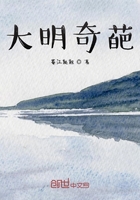Everything is stone, and stone of the heaviest--floors, stairways, mantels, benches--everything. The walls are four to five feet thick. The streets generally are four or five to eight feet wide and as crooked as a corkscrew.
You go along one of these gloomy cracks, and look up and behold the sky like a mere ribbon of light, far above your head, where the tops of the tall houses on either side of the street bend almost together. You feel as if you were at the bottom of some tremendous abyss, with all the world far above you. You wind in and out and here and there, in the most mysterious way, and have no more idea of the points of the compass than if you were a blind man. You can never persuade yourself that these are actually streets, and the frowning, dingy, monstrous houses dwellings, till you see one of these beautiful, prettily dressed women emerge from them--see her emerge from a dark, dreary-looking den that looks dungeon all over, from the ground away halfway up t6 heaven. And then you wonder that such a charming moth could come from such a forbidding shell as that. The streets are wisely made narrow and the houses heavy and thick and stony, in order that the people may be cool in this roasting climate. And they are cool, and stay so. And while I think of it--the men wear hats and have very dark complexions, but the women wear no headgear but a flimsy veil like a gossamer's web, and yet are exceedingly fair as a general thing. Singular, isn't it?
The huge palaces of Genoa are each supposed to be occupied by one family, but they could accommodate a hundred, I should think. They are relics of the grandeur of Genoa's palmy days--the days when she was a great commercial and maritime power several centuries ago. These houses, solid marble palaces though they be, are in many cases of a dull pinkish color, outside, and from pavement to eaves are pictured with Genoese battle scenes, with monstrous Jupiters and Cupids, and with familiar illustrations from Grecian mythology.
Where the paint has yielded to age and exposure and is peeling off in flakes and patches, the effect is not happy. A noseless Cupid or a Jupiter with an eye out or a Venus with a fly blister on her breast are not attractive features in a picture. Some of these painted walls reminded me somewhat of the tall van, plastered with fanciful bills and posters, that follows the bandwagon of a circus about a country village. I have not read or heard that the outsides of the houses of any other European city are frescoed in this way.
I cannot conceive of such a thing as Genoa in ruins. Such massive arches, such ponderous substructions as support these towering broad-winged edifices, we have seldom seen before; and surely the great blocks of stone of which these edifices are built can never decay; walls that are as thick as an ordinary American doorway is high cannot crumble.
The republics of Genoa and Pisa were very powerful in the Middle Ages.














